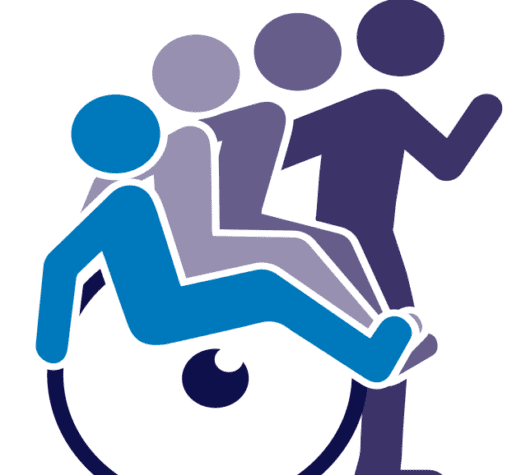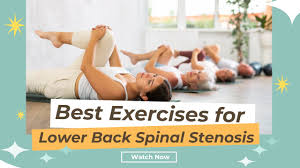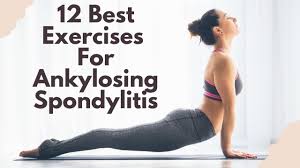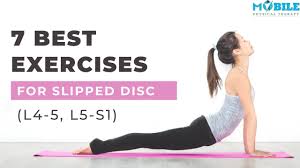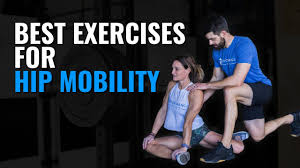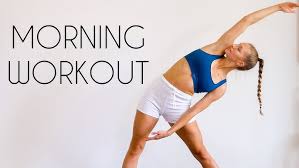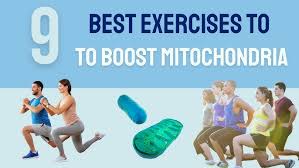9 Best Exercises for Lower Back Spinal Stenosis
Table of Contents
Introduction:
Pain, stiffness, and discomfort from lower back spinal stenosis can frequently interfere with day-to-day activities. One of the best strategies to control symptoms, increase flexibility, and fortify the muscles supporting the spine is to perform the appropriate exercises.
Mild, focused motions can improve general spine health, improve mobility, and lessen strain on the spinal nerves. The top nine exercises for lower back spinal stenosis that are safe, useful, and effective for reducing pain and promoting long-term back stability and strength are included in this article.
Benefits of the Top 9 Lower Back Spinal Stenosis Exercises:
There are several functional and physical advantages to performing the appropriate exercises for lower back spinal stenosis, which aid in the proper management of the disease. The following are the main benefits:
- Pain Relief: Lower back pain and suffering are lessened by mild stretching and strengthening that relieves pressure on pinched spinal nerves.
- Increased Flexibility: Exercises provide more comfortable and fluid movements by releasing tense muscles and joints.
- Improved Mobility: Walking, bending, and sitting are all much simpler with regular practice, which regains range of motion.
- Decreased Nerve Compression: By opening up the spinal canal, some postures relieve pressure on pinched nerves that can produce tingling, pain, or numbness.
- Strengthened Back and Core Muscles: Stability and a lower chance of subsequent damage are provided by stronger muscles around the spine.
- Improved Stability and Balance: Focused motions enhance coordination, reducing the risk of falls or unexpected back strain.
- Long-Term Spinal Health Support: Regular exercise slows the progression of stenosis symptoms by strengthening the spine.
- Increased Self-Belief and Quality of Life: Exercise helps people stay active and independent in their everyday lives by decreasing pain and improving function.
9 Best Exercises for Lower Back Spinal Stenosis:
Child’s Pose:
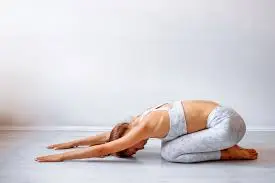
By extending the spine and relaxing the surrounding muscles, Child’s Pose is a mild stretching exercise that helps reduce lower back strain. It promotes a little opening of the spinal canal, which can relieve nerve pressure and lessen the pain caused by spinal stenosis.
This pose encourages relaxation and improved posture while also increasing hip, thigh, and spine flexibility. Child’s Pose is a great way to manage lower back pain since it may help relax the body and offer calming relief from stiffness.
Knee to Chest Stretch:
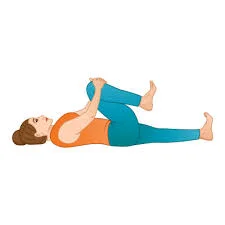
A straightforward yet incredibly powerful exercise for reducing lower back spinal stenosis pain is the knee-to-chest stretch. This stretch helps lengthen the lower spine, relieve stress in the lumbar area, and lessen nerve compression by gently drawing one or both knees toward the chest.
Additionally, it relaxes tense hip and glute muscles, which frequently cause back pain and stiffness. Regularly performing this stretch can increase spinal mobility, promote flexibility, and offer calming relief from lower back pain.
Cat-Cow Stretch:
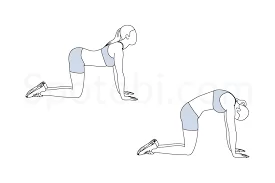
The dynamic Cat-Cow Stretch is particularly beneficial for people with lower back spinal stenosis since it softly mobilizes the spine. Frequent use of the Cat-Cow Stretch helps reduce lower back stress and increase total spinal mobility.
Seated Forward Bend:
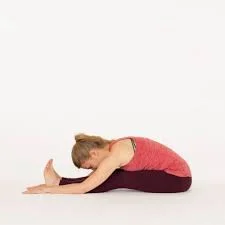
This forward-folding position relieves pain and reduces nerve compression in those with spinal stenosis by creating room in the spinal canal. Additionally, it promotes the relaxation of tense muscles and increases flexibility in the legs and back. Regularly performing the Seated Forward Bend can improve mobility, promote improved posture, and offer calming relief from lower back pain.
Bird Dog Exercise:
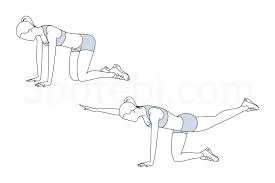
A great exercise for developing the lower back, core, and stabilizing muscles that support the spine is the bird dog. Strengthening the surrounding muscles helps people with spinal stenosis feel less pressure on the spinal canal and less pain in their lower back. Regular Bird Dog practice improves posture, keeps injuries from becoming worse, and supports long-term spine health.
Bridge Pose:
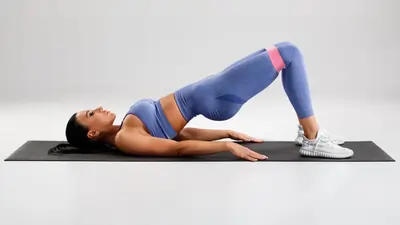
Bridge Pose is a potent exercise that increases spinal stability and develops the lower back, glutes, and core muscles. This position can help release pressure on constricted nerves linked to spinal stenosis by gently stretching the spine and opening the front of the body by raising the hips upward.
It also improves posture, relieves stiffness in the lower back, and boosts total hip flexibility. Regular practice of the Bridge Pose promotes better spinal alignment and offers long-lasting alleviation of lower back pain.
Partial Sit-Ups:
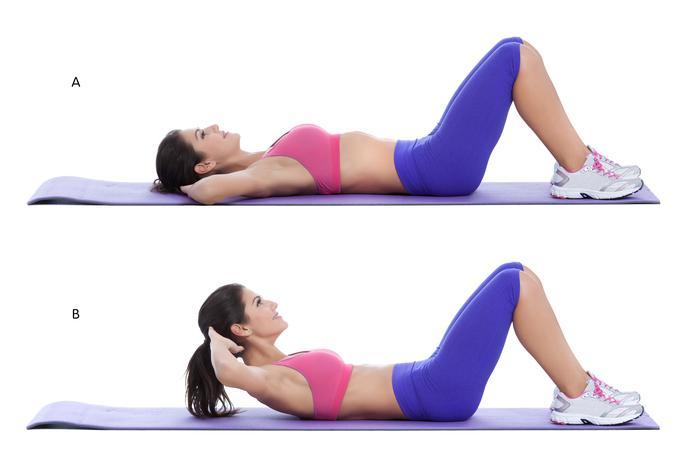
A secure and effective method of strengthening the abdominal muscles without overtaxing the lower back is to perform partial sit-ups. This modified form of sit-ups, which activates the core while avoiding undue strain on the spine, differs from full sit-ups in that it includes raising the shoulders slightly off the floor.
Stronger core muscles increase general stability, lessen stress on the spine, and support the lower back better in those with spinal stenosis. Regularly performing partial sit-ups can improve posture, reduce pain, and reduce the chance of developing more serious back issues.
Straight Leg Raises:
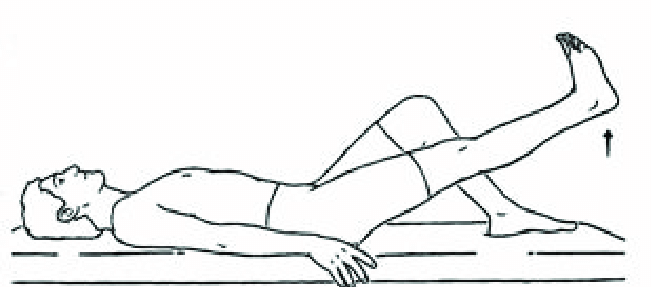
Straight Leg Raises are a mild yet powerful exercise that strengthens the hip flexors and lower abdominal muscles, giving the lower back more stability. This exercise is appropriate for those with spinal stenosis because it works the core without putting undue strain on the spine by raising one leg at a time while maintaining its straight position.
Additionally, it lessens strain on the lumbar area, improves posture, and increases stability. Strengthening, spine protection, and reducing lower back pain may all be achieved with regular practice of straight leg raises.
Side Bend:

This movement can increase spinal canal space for those with spinal stenosis, relieving pressure on pinched nerves and lowering lower back pain. Additionally, it promotes improved trunk mobility, posture, and flexibility. Regularly doing side bends improves spine health, reduces stress, and facilitates commonplace motions like reaching and twisting.
Conclusion:
Daily mobility can be difficult for those with lower back spinal stenosis, but with the correct exercises, symptoms can be effectively managed, and quality of life can be enhanced. Child’s Pose, Knee-to-Chest Stretch, Cat-Cow, Bird Dog, and other mild stretches and strengthening exercises can relieve pain, improve flexibility, and lessen nerve compression.
People with lower back spinal stenosis can benefit from increased mobility, better posture, and long-term relief by regularly performing these 9 greatest exercises, which will enable them to continue being active and pain-free.
FAQs:
For spinal stenosis, there is no one “best” muscle relaxant because the greatest choice for you will depend on your needs and the intensity of your symptoms. Common options include baclofen (used for severe spasms), methocarbamol (less sedating), and cyclobenzaprine (a popular but possibly sedating alternative). The optimum prescription for you will be chosen by your doctor, who will also advise against combining alcohol with these drugs and take into account possible side effects, including dry mouth, sleepiness, and dizziness.
Surgery, physical therapy, and painkillers are frequently used to treat the illness. Natural alternatives, however, can also lessen spinal cord strain and aid with pain relief. Alternative treatments that can assist in reducing pain sensations include massage therapy, yoga, meditation, and physical therapy.
The areas where your nerve roots are being pinched may swell and become uncomfortable. Some pain and swelling may be alleviated by injecting a steroid medication into the area surrounding the pinched nerve. Steroid injections, however, might not be the best option for spinal stenosis.
Death rates from spinal stenosis are quite rare, and the disease itself usually poses little threat to life. With the right care, the majority of persons with this chronic pain syndrome may anticipate leading normal lives.
Walking on a treadmill may be a useful alternative for certain persons who have severe symptoms like drop foot and/or spinal stenosis with claudication. On the treadmill, patients may lean on the support bars and find a comfortable position.
Pain and inflammation can be reduced by switching between heat and cold treatment. While cold packs can lessen swelling and numb acute pain, using a warm compress or heating pad on the affected area can help relax tight muscles and promote blood flow.
Although there isn’t a single greatest exercise for spinal stenosis, the knee-to-chest stretch is a great choice since it eases strain on the lower back and stretches it gently.
Since effectiveness varies by patient and the intensity of symptoms, there is no one “most successful” treatment for spinal stenosis; nonetheless, laminectomy surgery is a common and very successful method of decompressing nerves in moderate to severe instances. Physical therapy, drugs like NSAIDs, and epidural steroid injections are non-surgical alternatives that are frequently effective for less severe symptoms. A multidisciplinary team and a customized strategy that takes into account the patient’s objectives, preferences, and particular condition are usually the best approaches.
L4-L5 pain may be relieved by a variety of therapies. Consulting a back pain expert will help you fix the issue more quickly and efficiently than speculating. Physical therapy, medication-assisted pain management techniques, and heat and ice therapy are possible forms of treatment.
A spinal stenosis expert, such as a neurologist or physiatrist, may provide beneficial treatment for those looking for non-surgical alternatives. These professionals specialize in identifying problems with the nerves and treating pain using non-invasive techniques, including medicine, physical therapy, or injections.
Because it enables the rider to lean forward, stretching the back and alleviating the stenosis while exercising, the upright bike is advantageous for people with spinal stenosis. The recumbent bike’s reclining seat will provide you with greater support and balance if you’re suffering from lower back pain.
For those with lumbar stenosis, exercises that require rounding of the back, such as certain squats or reaching for toes while standing, might be dangerous. These actions can cause nerve compression and worsen pain.
Non-surgical methods such as physical therapy, drugs (such as painkillers and anti-inflammatory drugs), and epidural steroid injections to lessen pain and inflammation are usually the first line of treatment for L4-L5 spinal stenosis. A doctor may suggest surgery to decompress the spinal canal if conservative measures are unsuccessful. To shorten recovery time, minimally invasive procedures are frequently employed.
Knee-to-chest stretches, pelvic tilts, child’s pose, stationary cycling, and swimming are the best workouts for lumbar spinal stenosis since they all encourage spinal flexion and reduce nerve pressure. Core stability and support can also be enhanced by strengthening exercises like wall squats, planks, and hip bridges, but it’s important to speak with a physician or physical therapist before beginning any new program.
References:
- Pt, B. S. (2025, April 10). 10 Spinal stenosis exercises to reduce pain and improve flexibility. Verywell Health. https://www.verywellhealth.com/exercise-program-for-spinal-stenosis-2696100
- Kassraie, S. C. & A. (2024, September 20). Exercises that relieve low back pain. AARP. https://www.aarp.org/health/conditions-treatments/exercises-for-lower-back-pain//
- Levi. (2025, April 14). Spinal stenosis and pedaling: Plus what 9 exercises to avoid. Lattimore Physical Therapy. https://lattimorept.com/avoid-doing-these-9-exercises-if-you-have-spinal-stenosis/
- Cadman, B. (2025, April 14). How to strengthen the lower back. https://www.medicalnewstoday.com/articles/323204
- Pt, R. M. (2021, January 7). Exercise for Sciatica from Spinal Stenosis. Spine-health. https://www.spine-health.com/wellness/exercise/exercise-sciatica-spinal-stenosis
